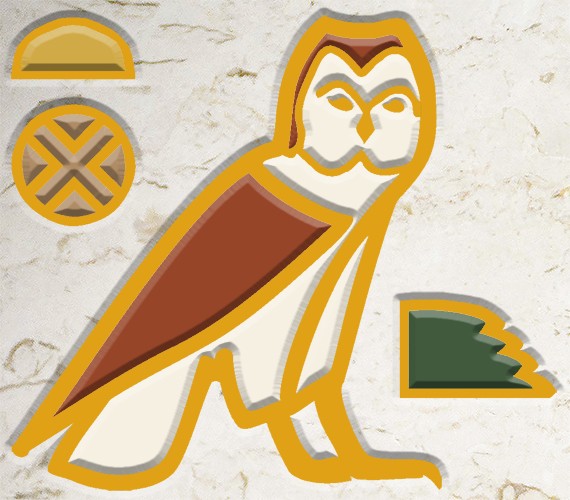The prayer to the god Thoth for skill in writing, known as Papyrus Anastasi V, is inscribed in Hieratic on papyrus, dated to c. 1150, toward the end of the New Kingdom.
Uncovered at Thebes, before c. 1830 CE, it was purchased by the British Museum in 1839 from the collector Giovanni Anastasi.
The papyrus is authored by a young scribe as a petition to the god of writing. The scribe observes the god’s wisdom through the Council of Thirty, an important Judicial body that oversees regional issues. He longs for Hermopolis, his patron city, and it declares that he is the dispatch-writer of the Ennead, the great nine gods created by Ra-Atum – Shu, Tafanat, Nuit, Gab, Osiris, Horus, Seth, Isis, and Nephthys. Two gods are evoked as companions of Thoth. Shay is the embodiment of Fate or Destiny, who determines the length of a person’s life and remains at their side until their final judgment by Osiris after death. His consort who also is with Thoth is Renenutet, a cobra goddess from Lower Egypt, is a goddess of good fortune who gives a person their secret name at birth. The prayer to Thoth is performed by melodic recitation to give power of words as utterance.
References
Ashworth, G. (2012). Ibis Coffin (Thoth). photograph, New York. Brooklyn Museum
Dodson, A. (2006). Ancient egypt: Pyramids and hieroglyphs: Enduring symbols of a great civilization. New Holland Publ. https://amzn.to/3RRB78G
Faulkner, R. O., Wasserman, J., Goelet, O., & Dassow, E. V. (2008). The Egyptian Book of the Dead: The Book of Going Forth by day: Being the papyrus of ani (royal scribe of the Divine Offerings), written and illustrated circa 1250 B.C.E., by scribes and artists unknown, including the balance of chapters of the books of the dead known as the Theban recension, compiled from ancient texts, dating back to the roots of Egyptian civilization. Chronicle Books. https://amzn.to/3OhiE2A
McCoy, P. A. (2022). Baboon Votive. photograph, New York.
Faience. Late Period to Ptolemaic Period Dynasty 26, or later, c. 664-30 BCE. Charles Edwin Wilbour Fund, 36.838.
McCoy, P. A. (2022). Thoth on the Cartonnage Sarcophagus of Nespanetjerenpare, Verso. photograph, New York.
Dynasty 22 to Early Dynasty 25, c. 948-718 BCE. Charles Edwin Wilbur Fund, 35.1265
Oakes, L. (2014). Sacred sites of ancient egypt: An Illustrated Guide to the temples, Tombs and pyramids. Southwater Pub, an imprint of Anness Publishing Ltd. https://amzn.to/3zo5Xio
Oakes, L., Gahlin, L., & Oakes, L. (2010). Ancient egypt: An illustrated reference to the myths, religions, pyramids and temples of the land of the pharaohs. Hermes House is an imprint of Anness Publishing Ltd. https://amzn.to/3v4Sjhh
Silverman, D. P. (1997). Ancient Egypt. Duncan Baird. https://amzn.to/3zjYy3k
Stierlin, H. (2007). The pharaohs: Master builders. Terrail. https://amzn.to/3PHhRsH
Strudwick, H. M. (2016). Encyclopedia of ancient Egypt. Amber Books Ltd. https://amzn.to/3PFeJOb
Wilkinson, R. H. (2000). The complete temples of Ancient Egypt. Thames & Hudson. https://amzn.to/3okkMfq
Wilkinson, R. H. (2003). The complete gods and Goddesses of Ancient egypt. Thames & Hudson. https://amzn.to/3b0q9x7



Be First to Comment